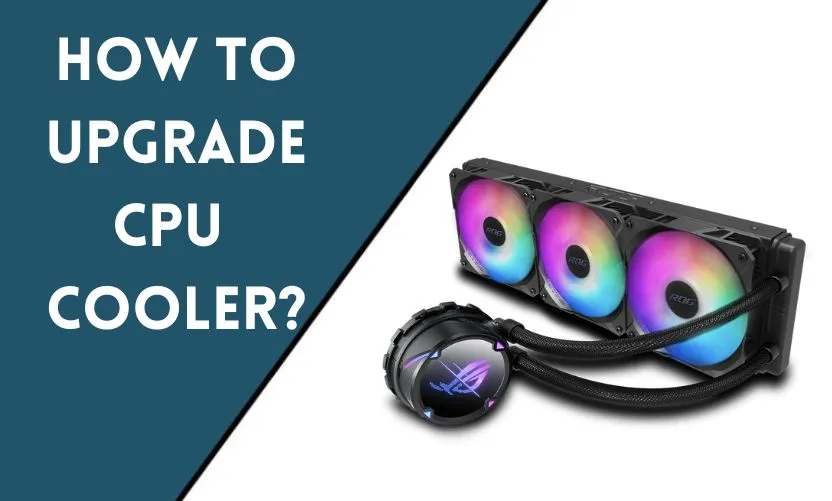
A CPU cooler combines a heat sink and a fan or sometimes a liquid cooling system. The heat sink is a metal block that sits on top of the CPU and helps dissipate heat from the CPU into the surrounding air. The fan helps to blow air over the heat sink to cool it down further and remove the hot air from the case. Several types of CPU coolers are available, including air coolers, which use fans to circulate air over a heat sink, and liquid coolers, which use a pump and radiator to circulate coolant over the CPU. Some CPU coolers are designed for specific CPU sockets, so choosing the suitable cooler for the specific system is essential.
Conditions
Thermionic Fluid: The ideal option is to have your syringe of a thermal solution, even if many CPU coolers these days come with pre-installed thermal paste. If your cooler already has a layer of thermal paste installed, do not apply the second coating on the CPU.
Tools: A Philips head screwdriver has required for this installation. Many air coolers had installed without the use of tools or even with the aid of the tools they come with, but having your own is recommended to install more expensive air and liquid coolers, open the PC case, and perform other tasks.
How can I improve my CPU cooler?
- Examine the CPU cooler as it is now. If the fan on your computer is loud or not working, this can indicate that the product has broken or the equipment had cleaned.
- Determine which CPU cooler is appropriate for your device. You can use the website Pcpartpicker.com to get a list of all compatible CPU coolers that should fit without needing any adjustments cutting holes, and creating space once you’ve determined which one best suits your requirements.
- Determine the level of dust buildup inside your CPU cooler. Most units have detachable bottom panes; therefore, use less than ten cotton swabs to remove as much dust as possible; additionally, the CPU cooler has included. Don’t worry if you can’t take the panels off.
- Prepare the motherboard for the new CPU cooler installation and wait to install the fan. Set up every tool before you usually screwdrivers, thermal paste or thermal pad, and washers. Make sure to assemble the parts slowly and steadily; to avoid mistakes, Use the screws that came with your new fan or the tape on the back of your old heat sink to secure the heat sink to the motherboard. All CPU fans require this step unless they already have a pre-applied thermal pad or paste, which you should know because you have researched before purchasing new parts.
- Disassemble the old CPU cooler from the motherboard by removing the screws from the back plate. Following this step, remove the motherboard from the case. If any cables still connect the cooler to the computer casing, remove them.
- Remove the old CPU fan from the base’s top of the CPU cooler where you removed the old one. Depending on your model, some new coolers can need a screwdriver for this step or a different kind of socket wrench. Be careful during this step because the fan, heat sink, and base of your CPU cooler, all of which will be exposed, are all sharp. If you aren’t careful or don’t wear safety equipment like gloves, you could hurt yourself.
- Attach the new CPU cooler to the motherboard and tighten the screws as needed. Do not worry if you are unsure of how tight to make these screws. Be careful if you tighten these screws too much because the CPU fan could pop off your motherboard while operating and harm it. The CPU fan could damage your hardware if installed too loosely; however, the likelihood of this happening is considerably lower than if installed too firmly.
- As there is a good chance you may need to contact the motherboard while installing a new cooling system, be sure it is still outside of its case. In the absence of screws, attach your old CPU fan to your new cooling system by screwing them in firmly but gently on the opposing sides of the fan head.
- After connecting any wires for fans or ports, place the motherboard back into the case. Reinstall the CPU cooler using screws in the motherboard. When installing the CPU cooler on an Intel processor, ensure there are tiny gaps under each of the four screw heads.
Advantages
Increased Storage Capacity: Extending a computer’s storage capacity is the most obvious benefit of adding numerous hard drives.
Greater Security: By using numerous physical drives, you may plan for redundancy. The other drives are usable even if one fails. Your data will be safer after that.
Greater Disc Use Efficiency: Windows was installed on SSDs, and data has stored on standard hard drives. Then you can benefit from faster system setup and save as much information as possible.
Numerous hard drives in Windows 10 allow you to multi-boot, making it simple to use multiple operating systems simultaneously.
Disadvantages
High Price: As more hard drives have been added to a computer, the price increases. In addition, replace your cooling system to avoid overheating problems.
More Power Supply: A typical supply can power two drives at the very least. If your computer has numerous hard drives, you must have several power supplies ready.
These hard drives might create a louder noise.
Conclusion
In conclusion, upgrading your CPU cooler can improve the cooling performance of your computer, allowing it to run at lower temperatures and potentially extending the lifespan of your CPU and other components. When upgrading your CPU cooler, it is essential to consider the compatibility of the cooler with your CPU, the size of the cooler, and the available space in your computer case. Additionally, you should also make sure to follow the manufacturer’s instructions and thermal paste application guidelines for the best results.
Frequently Asked Questions
Do you need to upgrade the CPU cooler?
Whether you need to upgrade your CPU cooler depends on several factors, including your computer’s usage, the performance requirements of your workloads, and the current cooling performance of your system.
Can I upgrade the CPU fan?
Yes, you can upgrade the CPU fan on your computer. Upgrading the CPU fan can improve your system’s cooling performance, allowing it to run at lower temperatures and extending your CPU’s and other components’ lifespan.
Can I replace the CPU cooler without removing the motherboard?
Sometimes, it is possible to replace a CPU cooler without removing the motherboard. Still, it depends on the design of your computer case and the specific cooler you are installing.
If your computer case has enough clearance and provides access to the CPU cooler from the side or the top, it may be possible to replace the cooler without removing the motherboard. Some all-in-one liquid coolers can be installed from the top of the case without removing the motherboard.











